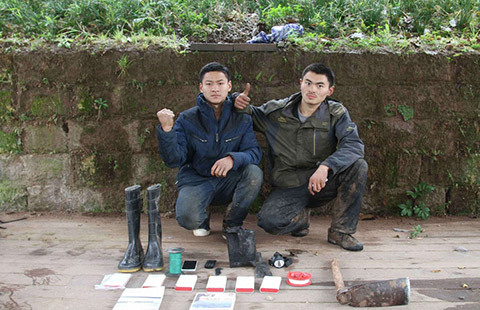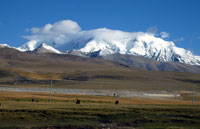Digging deep to explore subterranean space
By Xu Wei (China Daily) Updated: 2016-03-03 09:46Hidden worries
However, with the rising development of facilities, many experts have warned that extensive soil investigations are needed before work begins on the construction of underground facilities.
Zhu said research into the environmental impact of such developments, especially on groundwater levels, is still in its infancy, because the effects can only be clearly evaluated after a number of decades have passed.
Moreover, many underground projects were hastily approved because officials in some cities were eager to push forward projects during their tenures. "The research and investigation periods for some projects were far from adequate. That's very shortsighted," he said.
Chen, of the underground space society, said fire prevention is another pressing problem that could hinder the development of projects. "In the case of fire, it would be very difficult for firefighters and their equipment to reach premises underground," he said.
Another potential problem is the disposal of a large amount of construction waste, especially subsoil, generated by the development process.
On Dec 20, the collapse of a mountain of construction waste in the Guangming New Area of Shenzhen killed at least 73 people, and four were still unaccounted for on Jan 28, the last time the figure was updated.
Five days after the collapse, a State Council investigation team determined that the catastrophe was a work safety incident, not a geological phenomenon. An investigation is ongoing.
Shenzhen's exploration of underground space, including rail transit lines and underground infrastructure, as well as construction of the underground infrastructure, has produced such a large amount of subsoil that local dumping sites have been unable to process it, according to Chen Jialong, a professor at the Beijing University of Civil Engineering and Architecture who monitors the disposal of subsoil and construction waste.
Zhu said underground spaces should be regarded as a type of natural resource, and they are irrecoverable once they have been developed and utilized. "It would be very difficult to put things back to how they were once you have taken everything out of the ground," he said.
"Before green lighting any projects, the authorities should ask themselves this question: is it absolute necessary to move the facilities underground? If not, then they should conserve their resources for the future," he said.
- Deepen Reform to Promote People-Centered Urbanization
- China's cabinet guideline affirms urbanization drive
- Incentives needed to boost urbanization's full benefits
- Chinese Premier stresses human-centered urbanization
- Special Issue: Urbanization And Employment Of Migrant Workers In China-Urbanization of Migrant Workers and Expansion of Domestic Demand
- Baotou selected as national urbanization pilot city
- China's urbanization drive to focus on integrating rural migrants
- Chinese premier calls for co-op with SCO countries on urbanization
- Hukou reform lags in urbanization drive
- Energy sources revised amid urbanization push
- Energy sources revised amid urbanization push
- China's infrastructure project boosts Mozambique's urbanization
- Digging deep to explore subterranean space
- 110 Long March rockets to be launched in 5 years: scientist
- Mobile HIV testing labs to hit streets in capital
- Veteran journalist named new spokesman of China's top meeting of political advisors
- Elder care seen as a key concern in a graying nation
- Beijing center helps woo foreign talent
- China's lunar probe sets record for longest stay
- Shanghai teachers win high marks
- Xi to meet Obama soon, premier says
- New legislation outlaws domestic abuse







